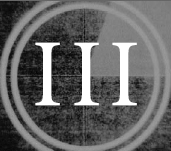| Gaffer Introduction |  |
Applications
The gaffer, also known as the chief lighting technician, is responsible for setting up the lights to achieve the visual effect desired by the Director of Photography (DP). A gaffer is also responsible for providing the electricity (via generator if no house power is available) and controlling it on set. The gaffer manages one or more electricians under him to achieve these ends.
The gaffer is essentially the head electrician. Electricians are also commonly known as juicers or sparks. Their responsibilities include placing and focusing lights, setting up distribution of electrical power, and often providing power for other departments such as make-up lights, wardrobe irons, etc.
On a guerilla shoot, the positions of gaffer, key grip, electrician, and grip may all be rolled into one. For the purpose of this book, the following chapters will provide tools and information to fulfill the tasks of gaffers and electricians. You’ll learn the items that go on an electrician’s tool belt. You’ll construct various lights and light controllers. You’ll learn techniques used to achieve particular lighting effects.
Even if you have access to professional equipment, you’ll find that some hand-made items, such as the soft box, have advantages over their professional equivalents. Even if you don’t intend to build your own lighting equipment, I would suggest that you at least skim the following chapters. I’ve included many lighting and electrical techniques that I’ve learned in my working time in Hollywood. This information will probably help you if you are at all involved with the lighting aspects of moviemaking.
| NOTE→ | It is important to recognize that a set electrician is not a fully qualified electrician such as those who perform house wiring. A movie electrician knows all about power distribution relating to solving filming problems and rarely does he need to know the theory and general knowledge behind use, installation, and maintenance of general power systems. Likewise a certified electrician typically has no training in the specialty equipment used by a film crew. |
Here are a few general suggestions for working as a gaffer:
• Test all your equipment Whether you’re obtaining your equipment from a rental house or building it yourself, be sure to test every important piece before production begins. With rental houses, you’re responsible for everything being brought back in working order. You don’t want to find out when you return it that an item never worked – and you have to pay for it. With your own equipment, you need to make sure that the time in storage since its last use has not rendered it inoperable.
• Obtain spare bulbs before the shoot Bulbs burn out. Make sure you’re not caught empty handed when they do.
• Label bad equipment immediately If a cable burns or a light stops working, label it as “BOL” or burn out. If you don’t do this when it happens, you may forget to do it later. That means you’ll either attempt to use the bad unit again (dangerous or simply counter-productive) or you’ll have to search for it when it’s time to replace it.
• Treat electricity with respect Late at night after a long day, activities of plugging and unplugging power tend to become cavalier. It’s at this time that most accidents happen. Using electricity is perfectly safe if handled properly. Regularly remind yourself and your crew to pay attention and work in a safe manner.
• Ask your DP about the film’s look All the neat lighting effects in the world will be worthless if they don’t show up in the final footage. You have to know what the final desired effect must be in order to accommodate this. Maybe the DP is using a special post-production technique or special lenses (such as anamorphic lenses) and you have to overlight each shot. You need to know about this, so the light and electrical packages you choose will be able to handle the extra load.
• Carry extra C47s clipped to your shirt sleeve C47s, otherwise known as clothespins, are generally used to hold gels or other diffusion to the barn doors of lights. You won’t look like a professional electrician if you don’t have at least a few of these hanging from your shirt sleeve at all times.
• Buy the handbook If you’re serious about working in the movies, whether as a gaffer or an electrician, buy Harry C. Box’s “Set Lighting Technician’s Handbook” (ISBN 0-240-80257-8). It provides complete information on everything from lighting equipment to generators and is considered the electrician’s bible on most sets. This book is very well written and bursting with real-world information and advice.
